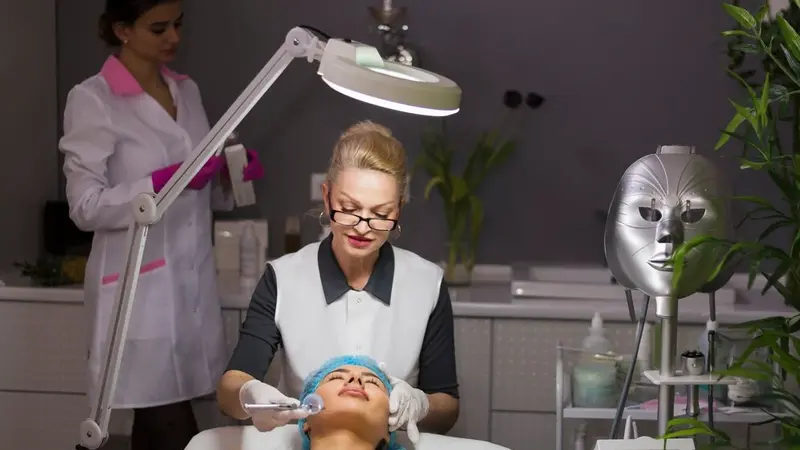Skin cancer is one of the most common types of cancer worldwide, and among its various forms, basal cell carcinoma stands out as the most frequently diagnosed. Though it’s typically less aggressive than other skin cancers, understanding this condition is vital for early detection, proper treatment, and prevention. By the end of this article, you will be able to learn what basal cell carcinoma is. Its symptoms, risks, diagnosis process, treatments, and prevention tips.
What Is Basal Cell Cancer?
Basal cell cancer originates in the basal cells—small, round cells found in the lower part of the epidermis (outer skin layer). These cells are responsible for producing new skin cells as old ones die off. When a mutation occurs in their DNA, often due to prolonged exposure to ultraviolet (UV) radiation from the sun or tanning beds, they can grow uncontrollably and form a tumor.
This type of cancer is considered “non-melanoma,” meaning it doesn’t arise from pigment-producing cells like melanoma does. It grows slowly and rarely spreads to other parts of the body, but if left untreated, it can invade deeper tissues and cause significant damage.
Signs and Symptoms
Basal cell cancer often appears as a change in the skin, such as:
- A pearly or waxy bump, often on the face, ears, or neck
- A flat, flesh-colored or brown scar-like lesion
- A bleeding or scabbing sore that heals and then returns
- A shiny pink or red growth with a slightly raised, rolled border and a central indentation
- Visible blood vessels in or around a lesion
These symptoms can resemble non-threatening skin conditions, which is why it’s important to consult a dermatologist for an accurate diagnosis.
Who Is at Risk?
Although anyone can develop this form of cancer, certain factors increase your risk:
- Fair skin: Lighter skin tones have less melanin, offering less protection from UV rays.
- Excessive sun exposure: Spending lots of time in the sun, especially without protection, raises risk levels.
- Tanning beds: Artificial UV exposure is just as dangerous as natural sunlight.
- Age: The risk increases as you get older, typically appearing in individuals over 50.
- Personal or family history of skin cancer: If you’ve had it once, you’re more likely to develop it again.
- Geographic location: People living in sunny or high-altitude regions are more exposed to UV rays.
Diagnosis Process
If you notice any suspicious skin changes, a dermatologist will perform a physical exam and may take a skin biopsy—a small sample of tissue for examination under a microscope. This test confirms the presence of cancer cells and helps determine the best course of treatment.
Treatment Options
Fortunately, basal cell cancer is highly treatable when caught early. Common treatments include:
1. Surgical Excision
A dermatologist removes the cancerous lesion along with a margin of surrounding healthy tissue. This method has a high success rate.
2. Mohs Surgery
This technique involves removing the tumor layer by layer and examining each layer under a microscope until no abnormal cells remain. It’s especially useful for cancers in sensitive or cosmetically important areas like the nose or eyelids.
3. Topical Medications
In some superficial cases, prescription creams or ointments may be used to stimulate the immune system or directly destroy cancer cells.
4. Radiation Therapy
This is an alternative for people who can’t undergo surgery. It uses targeted radiation to kill cancer cells.
5. Cryotherapy and Photodynamic Therapy
These treatments are typically used for small or superficial lesions and involve freezing or light-activated drugs to destroy the cancer.
Prevention Tips
While not all cases are avoidable, the following practices can significantly reduce your risk:
- Use sunscreen daily (SPF 30 or higher), even on cloudy days.
- Wear protective clothing, including wide-brimmed hats and UV-blocking sunglasses.
- Avoid tanning beds and seek shade during peak sun hours (10 a.m. to 4 p.m.).
- Perform regular self-checks to monitor any changes in your skin.
- Schedule annual skin exams with a dermatologist, especially if you have risk factors.
Final Thoughts
Although basal cell cancer is typically not life-threatening, it should never be ignored. Early detection and treatment can prevent complications and preserve your skin’s appearance and function. By understanding the risk factors, recognizing symptoms, and practicing good sun safety habits, you can take proactive steps to protect your skin health.




